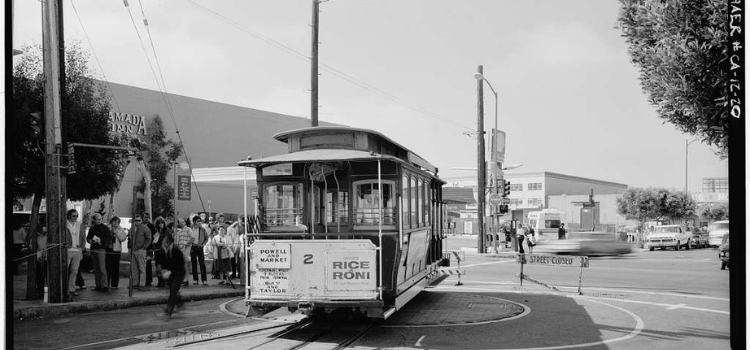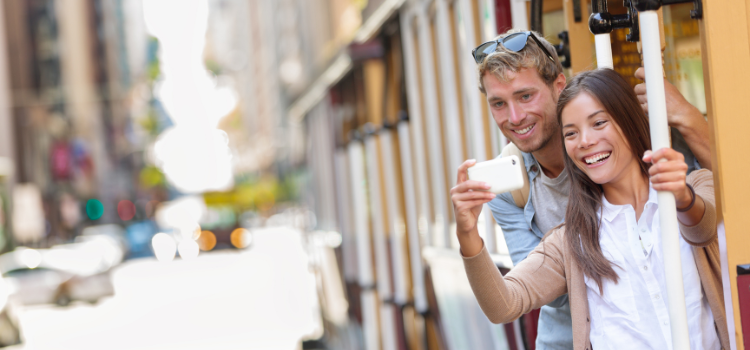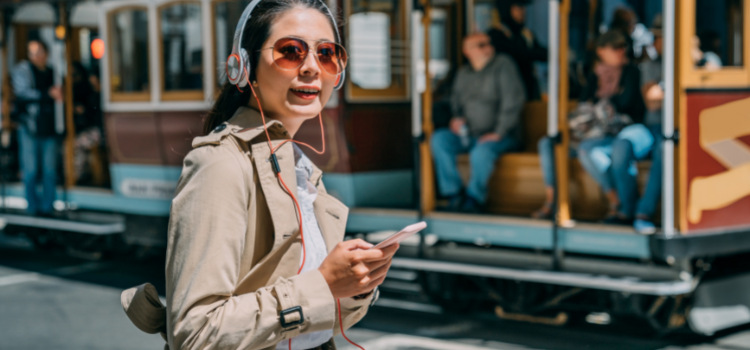A History of the Cable Car in San Francisco
The colorful, attention-grabbing cable cars are a staple of San Francisco’s downtown culture. Millions of people a year zoom through the streets of San Francisco in these unique vehicles, catching a car from Union Square to Fisherman’s Wharf, or to California Street. The cable car system in San Francisco, part of Muni Metro, is the largest manually operated cable car system in the world.
But did you know that this popular San Francisco attraction dates as far back as the 1870s? The idea for cable cars in San Francisco originated in 1869 from an inventor named Andrew Smith Halladie. Halladie was concerned about the welfare of the horses in traditional horse-drawn carriages, as they would sometimes get hurt or even killed when transporting passengers across wet, slippery streets. He was able to secure financial backing for his cable car idea in 1871 and 1872, and the system began.
The Original San Francisco Cable Cars
After he decided that cable cars would be beneficial to the city, Halladie worked with engineer William Eppelsheimer to launch the first successful cable-operated street running train on August 2, 1973 at the Clay Street Railroad. Clay Street was a notably steep street in the area, and the line involved the use of grip cars. The grip cars carried the grip that engaged with the cable, towing the trailer cars, and was the first of its kind to use grips.
The Clay Street Railroad line was a success, and became the template by which other companies would base their lines. Newer lines would also improve upon the original design with additions of their own.
The next line to begin operating was the Sutter Street Railway, opened in January 1877. Henry Casebolt and Asa Hovey would add something new to the cable cars with the invention of the side grip and lever operation. The side grip allowed cable cars to cross at intersections.
In 1878, Leland Stanford opened the California Street Cable Railroad and established the third line. The line was on California Street, and is the oldest cable car that is still in operation today.
And in 1882, the Presidio and Ferrie Railway opened. This was the first cable company to use “let-go” curves on its routes; in “let go” curves, the car drops the cable and gently coasts around the curves using its own momentum.
The last new cable car operator in San Francisco was established in 1889 by the Omnibus Railroad and Cable Company. Between 1873 and 1890, 23 cable car lines were established, but only three are left today.
So, why did the cable cars in San Francisco shut down, except for a few?

The Decline of the Cable Cars in San Francisco
The decline of cable cars began with the introduction of electric energy. Originally, the cable cars were powered by stationary steam engines. The steam engines consumed about 10 tons of coal a day, and created heavy black smoke towers that had to be vented with a 185-foot tall smokestack.
In 1901, the system was converted to oil, which lessened the amount of smoke and allowed the smokestack to be shortened to only 60 feet tall; this smaller smokestack still exists today, and can be seen at Washington-Mason.
Soon, electric energy would come onto the scene, and the first electric streetcars began operating in San Francisco in 1892. And by the beginning of 1906, most of the remaining cable cars were under the control of the United Railroads of San Francisco (URR). Only Cal Cable and the Geary Street Company remained independent operators.
URR wanted to convert its cable cars to overhead electric traction, but the company was met by opposition; they considered the overhead lines to be ugly and did not want them as features in the city. But the 1906 San Francisco Earthquake would allow URR to have its way.
The damage caused by the 7.9 magnitude earthquake destroyed the power houses and car barns and the 117 cable cars stored within them. The city raced to rebuild after the devastation, and URR was able to replace most of its cable cars with the electric streetcar lines it wanted.
By 1912, only eight cable car lines were left. And they all had steep grades that were impassable to electric streetcars. The remaining lines faced a lot of pressure in the 1920s and 1930s by the motor buses of the era, which were able to climb steeper hills than the electric streetcar.
Only five cable car lines survived by 1944: two municipal lines, and three independently owned lines from Cal Cable. It wouldn’t be long after that when authorities would try and shut down the cable cars for good.
The Fight to Save the San Francisco Cable Cars
In 1947, the mayor at the time, Roger Lapham, proposed to close the two municipal lines. But his plan was thwarted by 27 passionate women groups, led by Friedel Klussmann, who forced a referendum on an amendment to the city charter, which made the city continue operating the Powell Street lines. She led another campaign to have the city acquire Cal Cable, and it passed in 1949 after a failed first attempt. The city then began negotiations with Cal Cable to turn it into a municipal line.
Unfortunately, this would not go according to plan. In 1951, the three Cal Cable lines were shut down due to being unable to afford their insurance. The city tried to save the lines by purchasing and reopening them in 1952, but a referendum that would have funded maintenance for the tracks, powerhouse, and car barn failed in November 1953, so the city began plans to replace them with buses.
After negotiations and compromises, the current cable car system was put in place around this time. A protected system made up of the California Street Line from Cal Cable, the Powell-Mason line remained in municipal ownership, and a third hybrid line was formed. The line grafted the Hyde Street section of Cal Cable’s O’Farrell-Jones-Hyde line onto a shortened Powell–Washington–Jackson line, which is now known as the Powell–Hyde line.
Though the system was finally finalized, this was far from the end of the cable cars’ journey. The next step was their rebuilding.
The Rebuilding of the Cable Cars
By 1979, safety concerns with cable cars could no longer be ignored. The system shut down to undergo repairs at an estimated $60 million. Mayor Dianne Feinstein took charge of the effort to secure funding for the project, and succeeded, winning federal funding for most of the rebuilding effort.
The system was closed in 1982, and a total rebuild began. There was a complete replacement of 69 blocks worth of tracks and cable channels, a rebuild of the car barn and powerhouse, new propulsion equipment, and repairing/rebuilding 37 cable cars. The cable car system finally reopened in June of 1984. But that would not be the last time they were upgraded, and the cable cars continued to go through different transformations.
Since 1984, Muni Metro has continued to make the necessary upgrades to the cable car system. Another historical car was rebuilt, nine new replacement cars were built, a new terminal and turntable at the Hyde and Beach terminus was built, and a new turntable at the Powell and Market terminus was built. The system received another rebuild between 2017 and 2019, where Muni rehabilitated the cable car system’s gearboxes, which hadn’t been updated since they began service in 1984.
When the COVID-19 pandemic began, the cable car system was shut down in March 2020 to protect the operators; cable cars do not have a compartment separating them from the passengers. By August 2021, limited service on all three lines had begun. And in September, full service resumed.
The San Francisco Cable Cars Today
Today, the cable cars are open and ready for service. And they’re not the only ones! If you need a pickup after your ride on a cable car, we’ve got your back. At San Francisco Charter Bus Company, we specialize in group transportation options in the Bay Area and beyond. We also have access to a network of charter bus and minibus rentals in Palo Alto, Fresno, Mountain View, Sacramento, and other service areas.
Whether you need a shuttle bus service for your wedding or bachelor(ette) party, want to tour San Francisco with a private group, or want to take your students on a field trip to one of San Francisco’s many educational and cultural centers, we have the right charter bus rental in San Francisco for you. Give us a call today at 415-404-6456 and one of our reservation specialists will be happy to assist you!
Recent Posts
- 12 of Our Favorite Games to Play on a San Francisco Charter Bus Trip
- What to Know About San Francisco Charter Bus Rentals
- Charter a Bus to San Francisco Spring Events in 2024
- Your Charter Bus Driver: What To Know Before You Hit The Road
- A History of the Cable Car in San Francisco
- Group Guide to Visiting the San Francisco Museum of Modern Art
- A Guide to Visiting SF’s North Beach Neighborhood
- Sports Fan’s Guide to San Francisco
Do you need to rent a charter bus?
We can help. Call us now 415-830-8790 to reserve yours.


